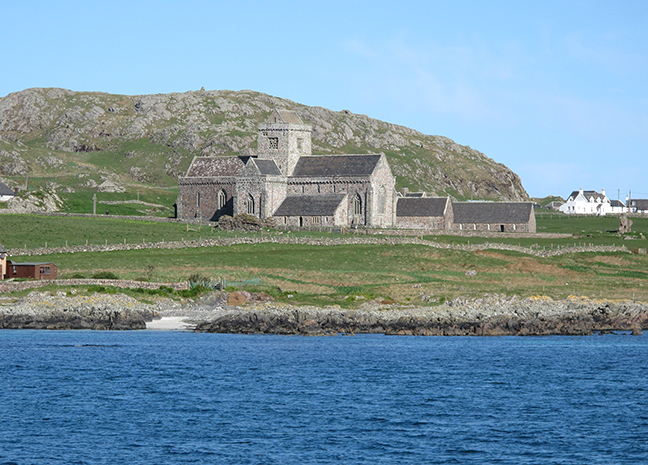Home / History / Irish History / The Book of Kells: Exploring an Irish Medieval Masterpiece / The scriptorium
This article is from the free online
The Book of Kells: Exploring an Irish Medieval Masterpiece


Reach your personal and professional goals
Unlock access to hundreds of expert online courses and degrees from top universities and educators to gain accredited qualifications and professional CV-building certificates.
Join over 18 million learners to launch, switch or build upon your career, all at your own pace, across a wide range of topic areas.

 Fig 1. The (restored) abbey of Iona. The writing hut of Colum Cille is thought to have been located on the hill in front of the abbey building (to the left of the picture). Photo: Rachel Moss
Fig 1. The (restored) abbey of Iona. The writing hut of Colum Cille is thought to have been located on the hill in front of the abbey building (to the left of the picture). Photo: Rachel Moss
 Fig 2. A scribe at work, with his materials and book cupboard behind him. From the Codex Amiatinus, made c. AD700 in the north-east of England. Florence, Biblioteca Medicea Laurenziana, MS Amiatinus 1, fol. 5r. CC-PD-Mark.
Fig 2. A scribe at work, with his materials and book cupboard behind him. From the Codex Amiatinus, made c. AD700 in the north-east of England. Florence, Biblioteca Medicea Laurenziana, MS Amiatinus 1, fol. 5r. CC-PD-Mark.






